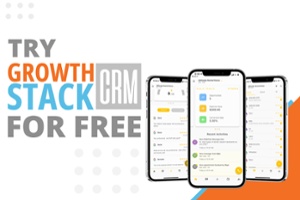6 Key Steps For Creating a Winning Content Strategy For Your Business
If your business has struggled with creating a written content strategy, you aren’t alone. In fact, 63% of businesses have not created a content strategy.
There are a few reasons for this. Lack of buy-in from stakeholders can make it difficult to prioritize this. Further, small businesses often began by dabbling in content marketing, then find themselves fully immersed without a clear roadmap.
That’s a shame. Your business could make an incredible impact—if only you could get people to listen to you. Unfortunately, lack of a clear marketing strategy means:
-
- No established goals or metrics
- Inability to recognize shortcomings in current efforts
- Missing opportunities to engage with your audience
- Handicapping your ability to create and manage workflows
- Stifling your ability to plan and innovate
Fortunately, you can create a content strategy that will power your efforts moving forward without losing your hair in the process. It’s not nearly as difficult as you might think. Just follow the steps below.
1. Detail Your Reasons For Creating Content
You may find that you’ve been creating content without any specific goal in mind. If that’s the case, it’s time for some clarity. Why are you creating content, and what do you want to achieve?
Your answers might include:
-
- Increasing name recognition
- Building authority and thought leadership
- Creating leads
- Developing a social media audience
- Boosting website traffic
- Pushing mid-funnel users to conversion
The biggest benefit of understanding why you’re creating content is that it helps you focus on strategy. Quality trumps quantity in the world of digital marketing. If you don’t understand the goal behind the blogs, videos, podcasts, emails, and downloadable content you create, how can you know that your strategy is working?
2. Get to Know Your Audience
Whatever content you produce, you have to create it for somebody. So before you can create a working strategy, make sure you know your audience. What are their demographics? What problems do they have that your products can solve? What are their values?
You may find that your audience isn’t homogenous. You could be talking to several distinct groups with their own unique qualities. In that case, you’ll want to create audience segments, then develop customer personas based on what you know about those.
Once you’ve created those personas, you’ll have a better idea of how to reach them with relevant content.
3. Identify How Content Can Help You Reach Each Goal — Or Not
Here’s something to consider: Content may not be the answer to every marketing problem you have. For example, your website traffic problem may not have anything to do with content. Instead, it could be an optimization and performance issue. In this case, throwing content at the problem won’t solve it.
For the goals that can be reached with content, create a list of content types for each one. Then, detail how that content will help you achieve that objective.
For example, if your goal is to build authority and thought leadership, the content you produce could include:
-
- Blog Posts: Sharing insightful expert content to provide actionable information to customers and potential customers. Earn backlinks and shares.
- Guest Posts And Articles: Connect with new audience members and share expertise through content posted on other sites.
- How-to Videos: Using visual content to provide viewers with tips and insights into our products as well as our industry.
4. Define Success And How to Measure It
So, will you know your efforts to use content to build authority and thought leadership are successful? What are the metrics you will use?
If you haven’t been using any analytics up until now, things might be a bit sticky at first. That’s because you don’t necessarily have a baseline to help you understand where you are right now.
That’s okay! There’s no time like right now to choose a website and social media analytics package to help you track. If you use Google Analytics, you will be able to extract the following information:
-
- Traffic
- Bounce Rates
- Visitor Location Data
- Devices Used
- Sources of Traffic
- On Site Behavior
- Conversion Rates

The most popular social media platforms also offer analytics tools to business users.
Once you have your data, you can decide what metrics you want to improve. For now, imagine your focus is earning backlinks from your blog posts. Right now, each of your posts has earned between zero and three backlinks.
You’ve decided to focus solely on the number of backlinks, and you want to increase that number to at least three backlinks per post. You’ll be able to track that through Google and see if you are making progress towards your goal.
5. Create Action Steps For Accomplishing Each Goal
Let’s review. You know what you would like to improve. You have a way to quantify that. Now, you have a way to measure that as well. It’s time to take action. What are you going to do to achieve your objectives?
Sticking with the backlinks example, your steps might look something like this:
-
- Improve the overall quality of blog posts
- Increase promotional efforts on social media
- Engage in influencer outreach
For each action step, you may need to provide even more detailed actions you can take. For example, ‘improve quality of blog posts’ is pretty broad. You might decide to:
-
- Use keyword research to identify relevant topics
- Increase your use of high-quality images
- Include more authoritative sites
- Use data and examples
This is also a good time to identify any shortcomings in your content teams’ abilities. Do they have the training and resources they need?
Education is a valid part of your content strategy. It could be as simple as providing links to sample writing to look at and use as content examples. You might also decide it’s worth investing in digital marketing training to get your team up to speed.![]()
6. Revisit And Revise
Your content strategy should be a living document. Continue to track your progress using analytics.
When your strategy succeeds, be prepared to identify new goals and the steps you’ll need to take to accomplish those. When they don’t, you can return to your strategy to see what went wrong, then make the changes you need.
Final Thoughts: Never Stop Improving
Not long ago, content marketers used techniques that would never pass muster today. Imagine writing content today that prioritized keyword stuffing over actual value or publishing articles to low-quality directory websites instead of earning backlinks because you write authoritative content.
Audience expectations continue to grow, and it’s up to you to improve your content offerings accordingly. Boost your strategy by ensuring you are producing interactive content, videos, podcasts, and more so that you’ve always got something fresh to offer your audience.
Linda Ferguson started her career in a local company as a content writer 5 years ago. She has always been passionate about academia and writing. Besides her busy work schedule, Linda manages to find time for attending conferences that keep her up to date with the latest news in the industry. Follow her on Twitter and Facebook.
Build a Content Strategy That Scales Your Business with ROI Online
You don't have to figure out inbound marketing on your own. With the ROI PitStop, you'll get to work one-on-one with a digital strategist who can:
-
- Create a customized marketing plan based on your specific business needs
- Walk you through executing your marketing plan step by step
- Teach you industry tricks, secrets, and best practices

Schedule a free strategy session to meet the ROI team and see for yourself if we could be a good fit!






